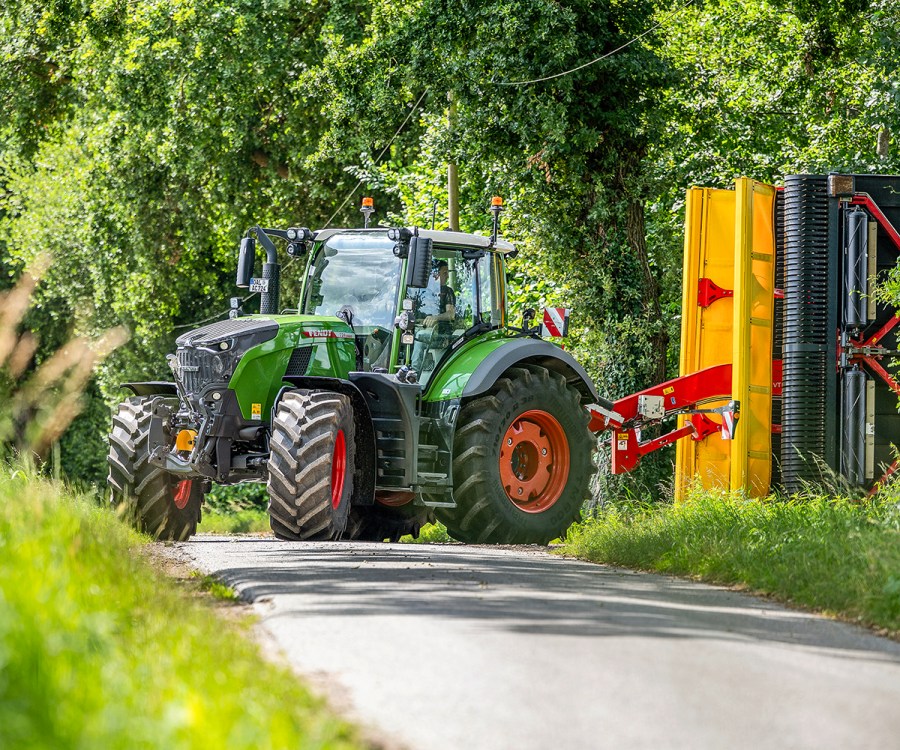The 724 Gen6 has been a best seller, not just in Germany but across Europe. Can the latest incarnation, the Gen7.1 with Dynamic Performance, grab the crown? Or has it been overtaken by the more powerful 728 Vario?
KEEPING IT BRIEF
- The last Gen6 724s will roll out of Marktoberdorf in early 2026 – the order book is now shut.
- Its namesake successor, the Gen7.1, delivers an extra 15kW/20hp thanks to Dynamic Performance.
- The price difference between the new and old is around £16,500.
Three years ago, we tested the Fendt 724 Vario under the headline ‘The One and only’. But even back then, the team members at Marktoberdorf were probably thinking to themselves ‘you ain’t seen nothing yet’, as work was already underway on a new seventh generation.
Since then, we’ve already tested the range topping 728 Gen7.0 (see profi 3/2024), so we won’t go over old ground with the usual positive and negative comments box.
Instead, to keep things interesting, we lined up a 724 Gen6 to see how this ‘old’ tractor stacks up against the brand new 724 Gen7.1 — a subtle addition to the model name that means all of what is now Fendt’s smallest six-cyl range gain ‘Dynamic Performance’, an extra 15kW/20hp, which most would call power boost. Oh, and there’s a new addition, the 726 Vario which tops out at 283hp.
So, let’s crack on with why we are here, chatting about old and new 724s. At a time when many are questioning their machinery spending, if you have been running a 724 Gen6 and it is time for some fresh blood, why not just go with another 724? After all it now includes the extra feelgood of a little more horsepower, without having to think about upping the budget and looking at the bigger 728.
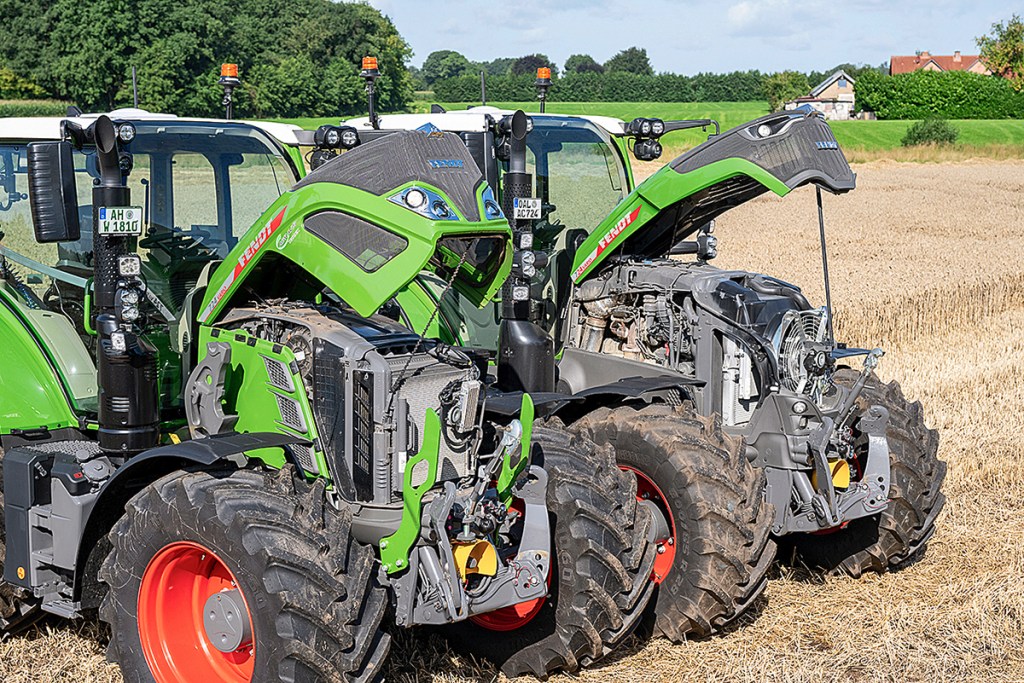
7.5 litres versus 6.1 litres
Differences begin under the sleek bonnet. The current, new 724 Vario DP uses a six-cylinder, 7.5-litre AgcoPower engine with a low-revving concept, while the 724 Gen6 has the long-serving 6.1-litre Deutz. Both of these meet Stage V exhaust emission regs, but they do so slightly differently.
Fendt has done away with the EGR (exhaust gas recirculation) valve on the new Gen7.1, which should help protect the engine. But to stay below the required NOx levels, it needs more AdBlue — a lot more. At rated speed the Gen7.1 uses just under 23g/kWh of DEF, while the older model sips less than half that (9.6g/kWh). Despite, this we still prefer the new engine set-up, as it can burn the diesel more cleanly
At maximum pto power the Fendt newcomer sends 213g/kWh through the injectors. And courtesy of “Dynamic Performance” the engine can deliver an additional 15kW, which is used for any auxiliary parts such as the radiator fan or the air-con compressor. This welcome “boost” in performance means the new 724 was able to deliver 179.8kW/241.1hp on the DLG dyno — that’s exactly 15kW/20hp more than its 724 predecessor, which peaked up at 165kW/221hp. Another point to the new kid.
Less fuel, more DEF
It’s a similar story when we look at the DLG Powermix test results.
The Gen7.1 averages 242g/kWh plus 26g/kWh AdBlue, while, in the 2022 test, the Gen6 needed 263g/kWh and only 11g/kWh of DEF. This puts the newcomer in the same league as the bigger 728 Vario.
There are some niggles, though: the bigger 484-litre fuel tank is only optional, with the standard fitment holding only 450 litres. Despite AdBlue consumption doubling, the tank is only 10 litres bigger (48l versus 38l). Which means you may need an AdBlue top-up to match two diesel fills.

One range, permanent four-wheel drive
The FendtOne controls haven’t changed from the Gen6 with the exception of two buttons that are now absent — one for the transmission range selection and the other for the four-wheel drive. With VarioDrive, not only is there no longer any need to select a field or road range, there’s no need to even engage the four-wheel drive; the tractor handles all of this automatically by itself.

The only thing missing, and something that we already criticised in our 728 test, is the ability to operate the tractor’s joystick and accelerator pedal independently of each other. In our view, this mod would further improve driving comfort.
Driveline efficiency is underlined by its drawbar power result of 154.0kW/206.5hp. It’s impressively frugal on the road too, reaching 50km/hr at just 1,300 revs. During our transport tests, the 724 proved to be 20% better than our current test average
Power delivery is similarly good: the Gen7.1 delivers 154kW at the drawbar, combined with remarkably frugal road runs. At just 1,300 engine revs, 50km/hr road transport costs more than 20% less fuel than any tractor that we’ve tested before. But that doesn’t mean the old 724 is overshadowed; it’s still excellent on the road, even if the tractor we had was missing the air bags for the three-point cab suspension.
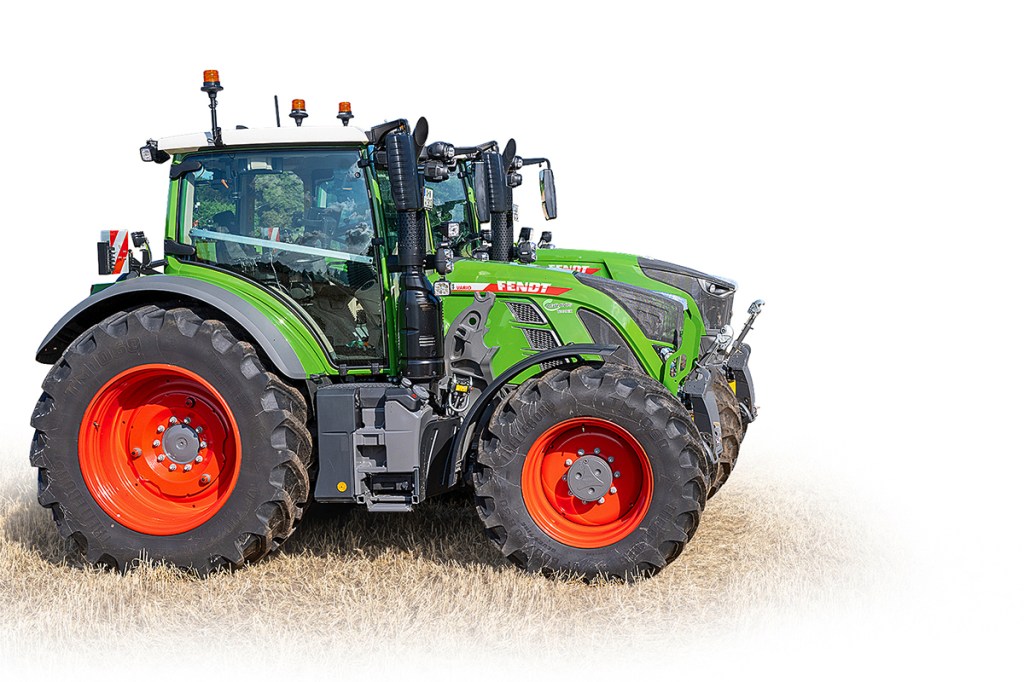
Added bulk…
One thing you will notice in the photos of the two models is that the Gen7.1 is that bit bigger — it’s wheelbase is 2.90m.
Our test 724 DP was carrying 600kg of wheel weights, so it tipped the scales at 9,745kg. The 724 Gen6 we have here didn’t have any wheel weights, though it did have loader brackets (+400kg); otherwise it’s of comparable spec and weighed in at just 8,740kg — nearly a tonne less. As a light all-rounder, that means there is less mass to accelerate, and you can add ballast for any demanding draft work. The wheelbase of these previous models is 2.78m.

Flip the script, however, and the Gen7.1’s extra weight and longer wheelbase work in its favour when towing heavy trailers, especially on hills. This latest 724 also packs 25% more torque when Dynamic Performance is taken into account. For those chasing an even lower power-to-weight ratio, you have to opt for the 728.
When it comes to payload the old and new are on a par. The 724 Gen7.1 has a gross weight of 15 tonnes at 40/50km/hr (or 14t at 60km/hr), while the Gen6 is 14 tonnes (at 40/50 km/hr). Both models have a very good 5.6t payload.

…but nimbler
The new model’s overall agility is unmatched. Despite being booted on a ‘small’ 600/65 R28 front tyre, the new Gen7.1 will turn within less than 11 metres! This stat is partly down to the VarioDrive system, where the hydraulically powered front axle actively pulls the 724 into the turn. It’s also due to the slim wasp waist design, which is made possible by the fan cooling pack. This turn is actually tighter than the Fendt 620’s, which we tested in the profi 8/2025 issue.
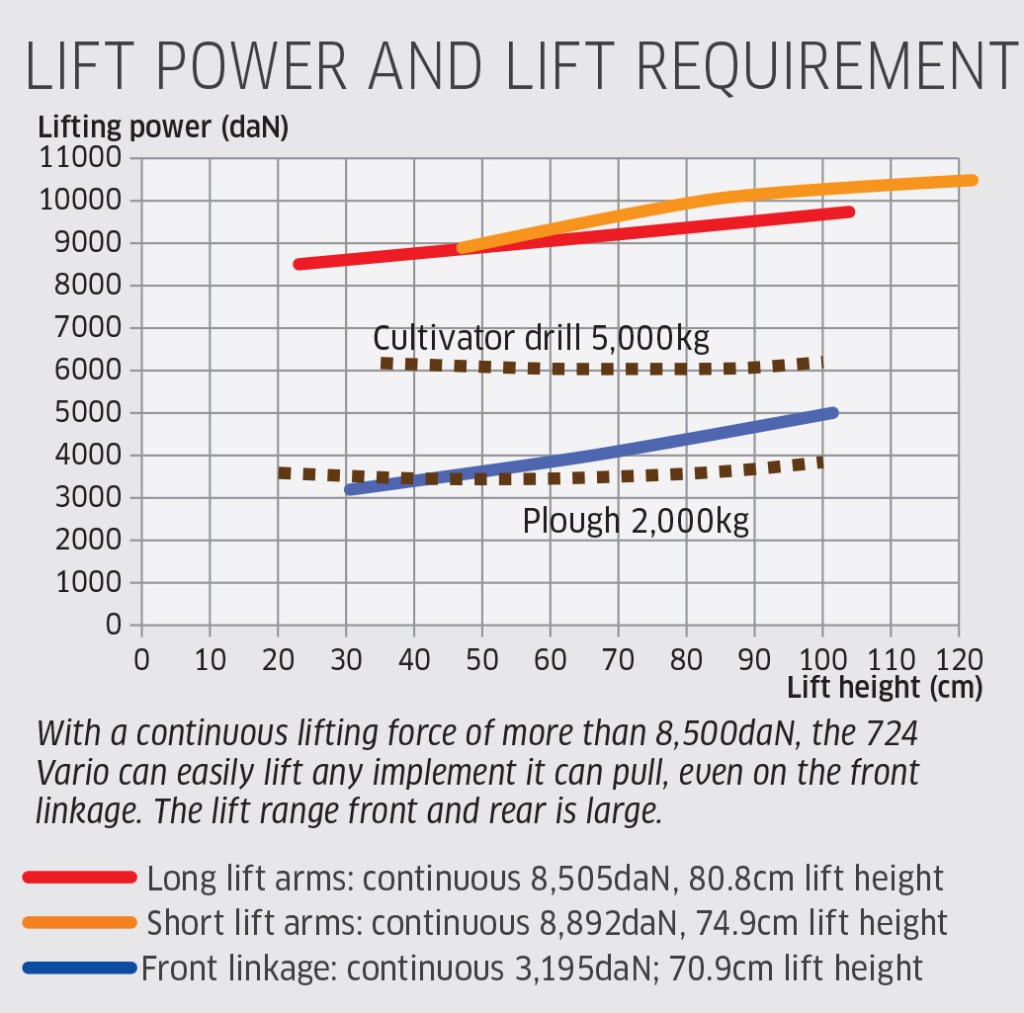
Plenty of hydraulic power
In its standard guise, the new Fendt 724 has a 165l/min pump. No real issue there, especially as a 225l/min pump is available as an option. Even better is the ability to have up to 10 spools, all clearly shown on the cab display where they can also be named and assigned. Compared to the Gen6, the rear couplers sit at a more convenient angle for easier coupling.
With 80 litres of oil available just for the hydraulics, there’s no risk of not being able to tip a big trailer. Whether you stump up the extra for the flat-face couplers that drip less oil is a matter of buyer choice. But for the Power Beyond system, these flat-face fittings are definitely better, and they stay cleaner too, not to mention some of Fendt’s rivals have been using them for years.
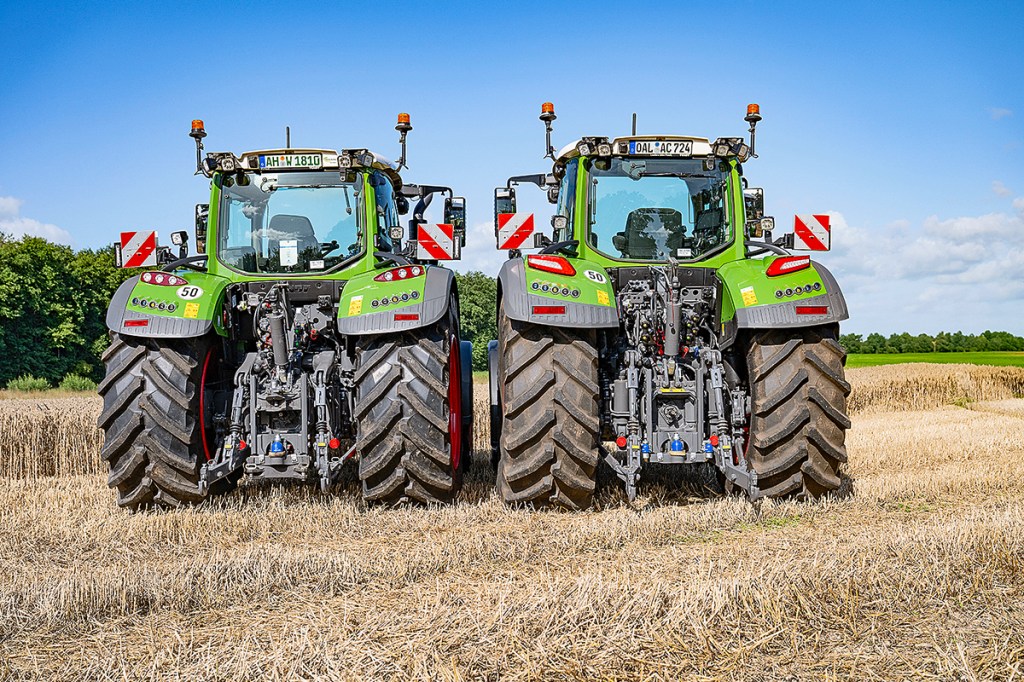
The rear linkage steps up a notch, too. With over 8.5 tonnes of lifting power, it should be on top of lifting most implements likely to be found on the back of a 724. New lower link stabilisers and a cable for taking the weight of the top link are also very welcome features.
A more mixed blessing is the simple latch mechanism that Fendt has started fitting; it raises the lower lift arm by about 15cm to up the clearance over trailed implement drawbars.
Unfortunately, there’s no clear marker to show when the link arms are latched in their top position. If you forget the arm is in this upper position and mount a heavy implement, the plastic catch holding the arm up will break.
The rear linkage control remains unique. From the terminal, the operator can select how much pressure should be applied to the implement — brilliant! On the other hand, the 724 Gen7.1 only comes with a single-acting front linkage as standard.
Same cab
There hasn’t been any improvement to the cab; it is still the same size as on the Gen6. However, the step up is better, with one more step and an easier reach door handle. It remains to be seen whether the updates introduced on the new 800 Vario, such as the adaptive lighting, will be offered for the 700 series in future.

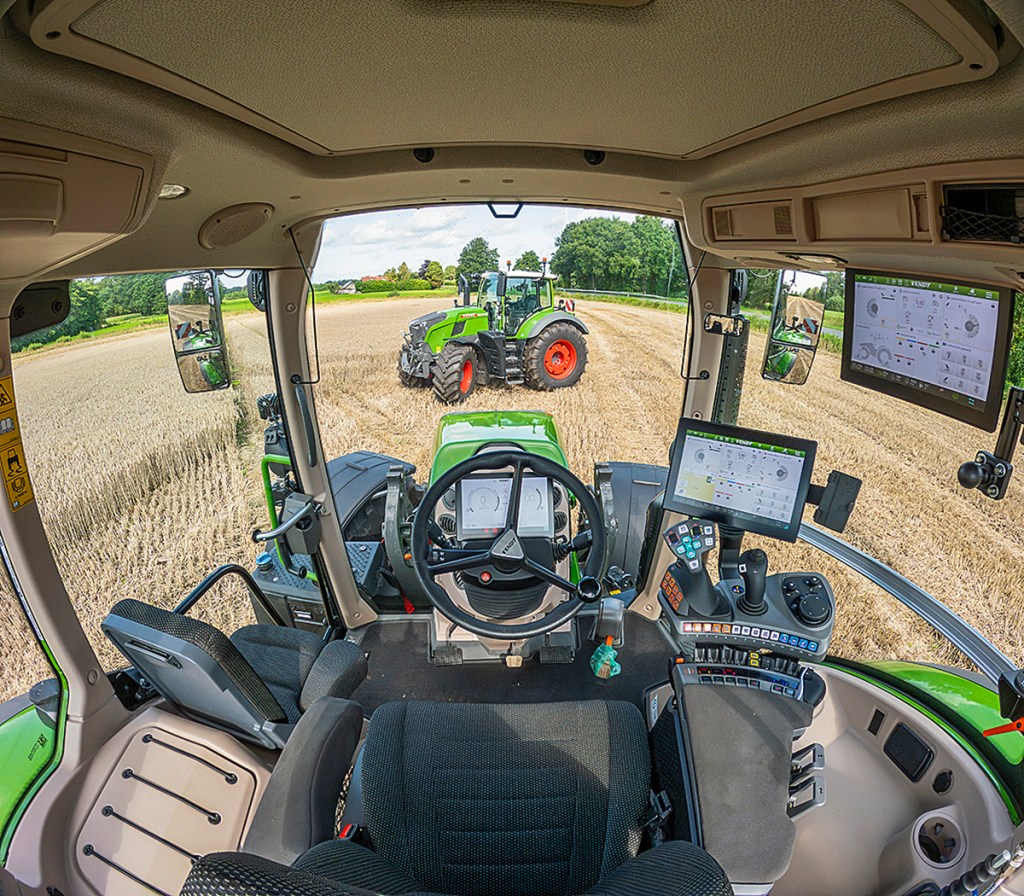
Sound insulation, which is helped by the laminated windscreen, is pretty good, with 69.5dB(A) reaching the driver’s ear. The smooth running Core75 engine is a treat to the ears inside the cab … that is until the reversible fan kicks into action when it gets a bit loud, just as it does on the 620 Vario. Neither the new or old 724 have a USB‑C port for charging phones etc.
Regarding windscreen wipers, the new model is better equipped with an additional wiper on the right-hand side. Both tractors have a step on the right as well as a poorly sized toolbox. At least an optional plastic box is available, and this can be mounted on top of the hydraulic tank.
Additional headlights on the Gen7.1’s sleek bonnet light up the area in front very well. But the lighting concept introduced on the new 800 and 1000 Vario models would be a nice option for future 700s, too.
Hot price
The main argument for the Fendt 724 Gen6 is its price, with the entry model listing at £262,300, while the 724 Gen7.1 is £278,000, around £15,700 more. With comparable specification, a Fendt customer will pay around £280,000 for the Gen6 model and £305,000 for the Gen7.1, according to price lists. When comparing price per horsepower, the new model looks better.
Now it’s a waiting game to see how dealers position the 724 against the 728, as this will largely determine whether the new 724 Vario remains a top seller.
Summary
The 724 that we have known since 2011 is about to call it a day, and in that time over 27,000 have been made. From early next year, the new 724 Vario Gen7.1 will be its namesake replacement albeit with a power boost that means there are a few more ponies in reserve. So, will Fendt customers wanting a six-cylinder stick with the 724, or will they opt for the top model, the 728?
Initially it looks like the 728 has been the go-to, but with the Dynamic Performance being added as it shifts to Gen7.1 and the option of 60km/hr travel, it looks as though the 724 is putting up a bit more of a fight to retain the crown as Fendt’s best seller throughout Europe. Time will tell if Fendt buyers are happy to splash the extra cash for the 728.
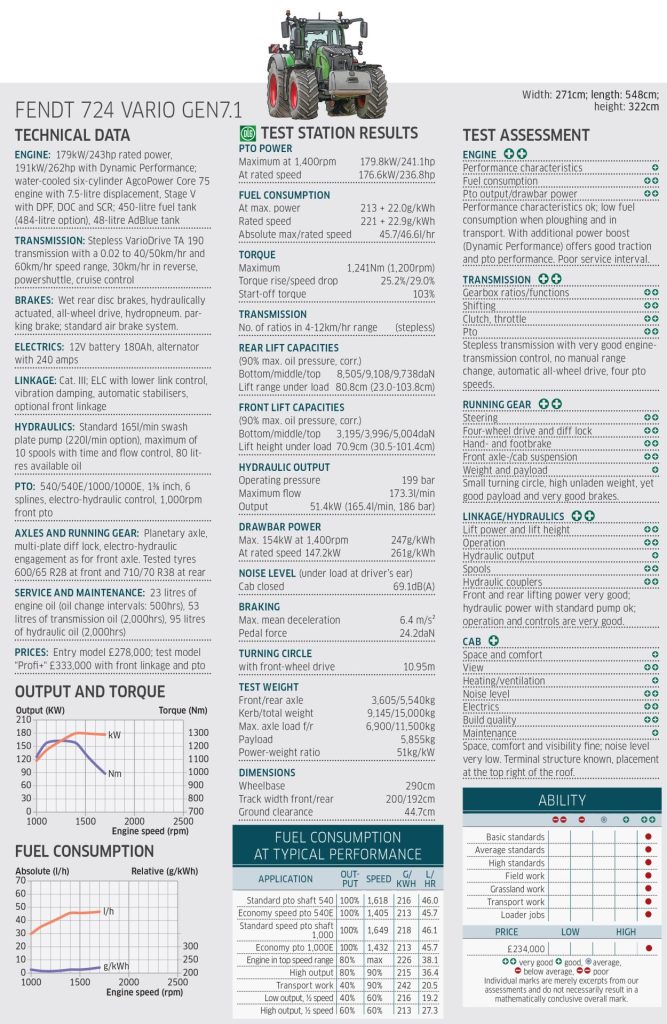

Tobias Bensing
For more up-to-date farming news click here and subscribe now to profi and save.

